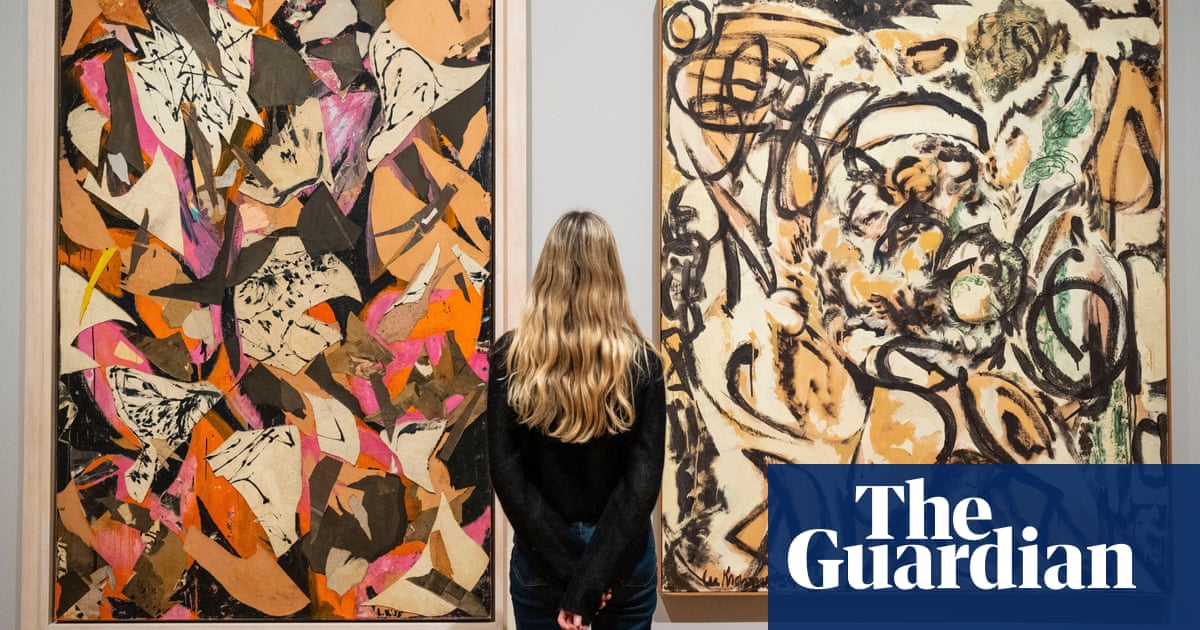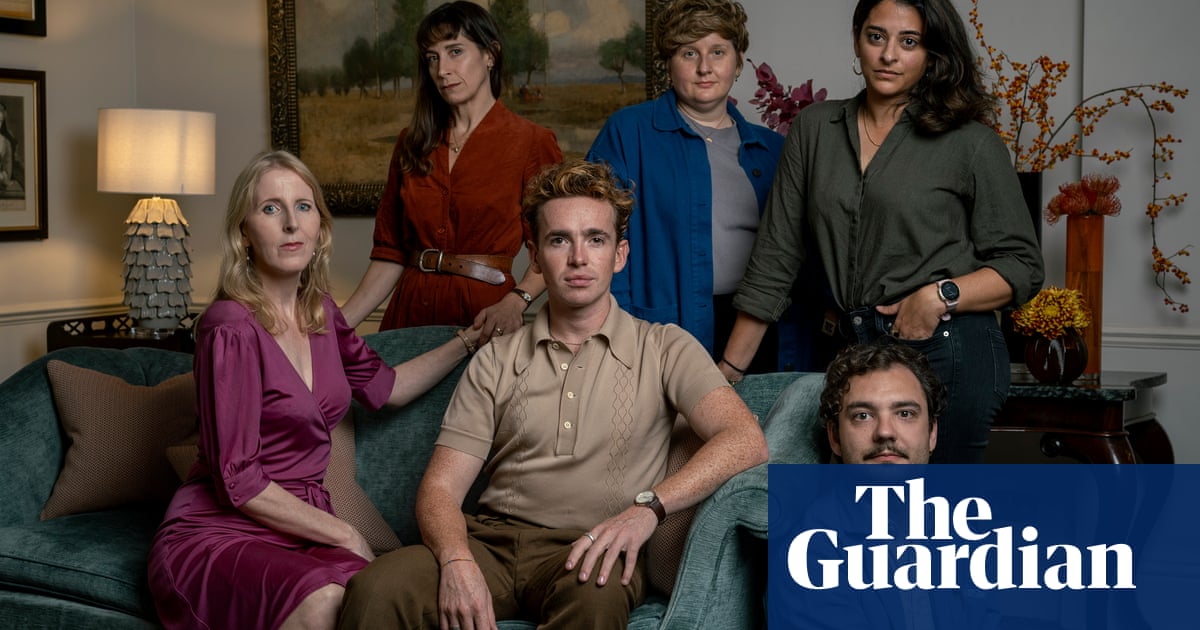
The cubers have come in their numbers. More than 100 people are packed into Wythenshawe Forum on a drizzly Sunday morning for Manchester Winter 2024, a two-day competition revolving around a simple aim: solving a Rubik’s Cube, and other twisty puzzles, in the fastest time possible – sometimes even while wearing a blindfold.
Pockets of parents surround two rows of tables, following every twist and turn. Puzzle anoraks whisper possible winners. The clicks and clacks of sliding plastic is incessant. Volunteer runners clutch freshly mixed-up cubes and dash from the scrambling station towards the competitors.
“Anyone can enter our championship, even if you’re five years old,” explains Nevins Chan Pak Hoong from the sidelines, appointed by the World Cube Association to oversee the competition. A speedcuber himself, he has been involved in organising the competitions for nine years. “It’s very wholesome. You could be sitting next to someone who was a world record holder,” he says (someone later tells me Chan Pak Hoong is, quite secretively, exactly that). Really, though, no one else matters. It’s about beating your past self again, and again, and again.
At each table, a player sits next to a judge (a fellow participant or parent) who ensures they follow the Rubik’s rubric. A bucket is lifted off the cube for the player to inspect. They take a deep breath and start the clock. Hands and fingers dance as the digits of the stopwatch display tick upwards. Within seconds, the act of magic is complete. Out pops a perfectly solved Rubik’s Cube.
The first ever Rubik’s Cube, then known as the Magic Cube, wasn’t so complete. This spring marks 50 years since Ernő Rubik, a professor of design in Hungary at the time, presented the prototype of his invention to his students in 1974, crafted from a crude structure of wood and rubber bands.
Applying for a patent and finding an international manufacturer, the Rubik’s Cube hit shelves across the world in 1980. Produced in plastic, each side was stickered respectively in white, red, blue, orange, green and yellow and was able to rotate across a central axis. It was a huge success. “It was probably because of its ultimate simplicity and complexity, both present at the same time,” Rubik tells me.
So much so that the Young V&A (then the Museum of Childhood) acquired and archived it in its very first year of production. “It’s an iconic object to have within our collection as it’s one of the most successful puzzles in the world,” says Tanaya Basu De Sarkar, assistant curator at Young V&A. “Ernő Rubik designed the cube perfectly to take on the go. It’s pocket-sized, lightweight and very difficult to break.”
It is estimated that 200m cubes were sold from 1980 to 1983 alone. Stacks of books explaining how to solve it were released, an animated series from ABC titled Rubik, the Amazing Cube followed, and the first ever Rubik’s Cube World Championship took place in Rubik’s home city of Budapest in 1982 (the next official one wasn’t until 2003).
But as quickly as it spun across the world, it faced an obstacle – almost instant market saturation. With hundreds of millions sold within years, almost everyone who wanted to get one had done just that. The cube became buried under the rubble of our waning attention spans. For decades, the cube slipped through the net of pop culture, gathering dust in bedroom drawers. Then, in 2020, Spin Master, owner of Etch A Sketch and Meccano, bought the brand from Rubik for $50m.
Over the last few years the puzzle has enjoyed an upturn in its popularity. “We’ve gone through a huge growth in the last few years,” Chan Pak Hoong says of the WCA tournaments. “We have to turn people away.”
Last year saw 37,500 competitors enter the scene. On the weekend of the Manchester Winter 2024, another 46 official tournaments were taking place around the world, from Mexico to Mongolia. Kyle (surname withheld), another delegate who only picked up a cube for the first time in 2022 and is now a blindfolded event specialist, went to 53 competitions last year and had just returned from one in Bristol the day before.
But why is a Rubik’s revolution happening again? Kyle and many others point to the importance of Netflix’s The Speed Cubers documentary, which showcased world champions Max Park and Feliks Zemdegs. Park, whose YouTube account has 150,000 subscribers, holds the world record for the 3 x 3 x 3 cube, thanks to a brain-scrambling solve of 3.13 seconds. “There’s a very simple reason for its renewed interest. Speedcubing is a fun and impressive sport. The film just helped to expose it to more people who didn’t know before,” he says.
The pandemic also played its part. Confined to our own four walls, the cube offered a new hobby. “Lots of people saw videos online and decided to buy one during lockdown,” says Danny Evans, who speaks to me after smashing a host of events at the Manchester tournament. While most speedcubers have a specialism, Evans is an all-rounder and often wins big. One parent jokes he must have a “strong neck” due to the sheer amount of medals he has bagged.
Since buying the company in 2020, Spin Master has worked to introduce the Rubik’s Cube to a new generation, “It’s about keeping it fresh, innovative and relevant in culture. It represents so much more than a toy,” says Sam Susz, senior director of global marketing. For him, the cube has what he playfully terms “resolve”, because of its magic as an object. “It’s so beautiful in terms of its form factor,” he says. Susz points me towards the Rubikcubism scene, which sees artists, such as Invader, use a large number of cubes to create mosaics. In 2020, the French artist’s Rubik Mona Lisa sold for more than £400,000 at auction. Now, new artists like Daniella Mani-Chaim, a 16-year-old creative known as The Cubist, are drawing on its aesthetic properties. “I’m attracted to complex projects. I love pushing myself to create artworks that don’t just blow people away, but also blow myself away,” she says.
While the world of toys, puzzles and general entertainment has become far more technologically advanced, Susz believes this physical quality is important. “As much as we’ve seen the digital age explode we haven’t seen our desire to interact with tangible objects stop,” he says.
For true cubers, though, it’s the puzzle factor that reigns supreme. “Crucially, what sets it apart from other classic crazes is that the Rubik’s Cube is a problem-solving puzzle that can take hours of patience to solve,” says De Sarkar.
Rubik himself thinks this quality is totally timeless. “Every new generation needs to learn and find proof they are capable of looking under the surface of difficult challenges and solving seemingly unsolvable problems,” he says. “Mostly generated by ourselves.”
Events such as Manchester Winter 2024 epitomise this excitement factor. “It’s a real dopamine rush to beat your best time,” Kyle says, pointing out a slew of national and world record holders that look barely old enough to buy a scratchcard.
As if by magic, a cuber participating in the 2 x 2 x 2 event springs up seconds later and announces a new personal record.
But surely it must get a bit boring solving the same cube over and over, I ask over the sounds of the clicks and the clacks bouncing off the leisure centre walls. “There are 43 quintillion combinations. It’s ridiculous. Even if we had a competition every day until the Earth died, there would be variations that we have never seen,” Kyle says.
In fact, it’s this repetitive nature that makes it so calming for many players. “Solving is very therapeutic. It helps me focus on moving forward instead of thinking about bad things in life,” Park says. And while a friendly rivalry exists, the support the speedcubers show to each other is heartwarming. “The cubing community is the most supportive in the world. I owe my life to the them for everything I have today,” Park adds.
For Kyle, it’s done wonders. “When I started a year ago, I had really bad social anxiety. Now, I’m going up [as a delegate] and making announcements on stage. I’ve had so much personal growth,” he says, explaining that many neurodivergent cubers like himself have found something in common with each other.
But while these friends and skills will prevail, can interest in the cube continue? Rubik is confident: “Do you remember your feelings about being 50 years old? I feel something similar. You have a robust past but also an exciting future and you are more curious about this yet unknown part of your life,” he says. “Can you reach something more than in the past? I am still eager to learn about the future. The cube has a long way to go to reach even my current age of nearly 80!”
While the original literature on solving the cube was rudimentary – Kyle laughs at the old books – cutting-edge algorithms and online tutorials are advancing the game. Its future is in the lightning-quick hands of the next generation of cubers, keeping it relevant through social media and grassroots competitions.
Back in Manchester, the winners’ ceremony is coming to a close and photographs of the medallists are being snapped. On stage, Evans throws up seven fingers to represent his hoard of awards. Chan Pak Hoong doesn’t waste a second signing up more competitors. “We’re going to be in Edinburgh next weekend and have a couple of spaces left,” he says. “Who’s going?” Dozens of hands, many still holding cubes, are thrown into the air, confirming there are plenty of new kids on the block.












